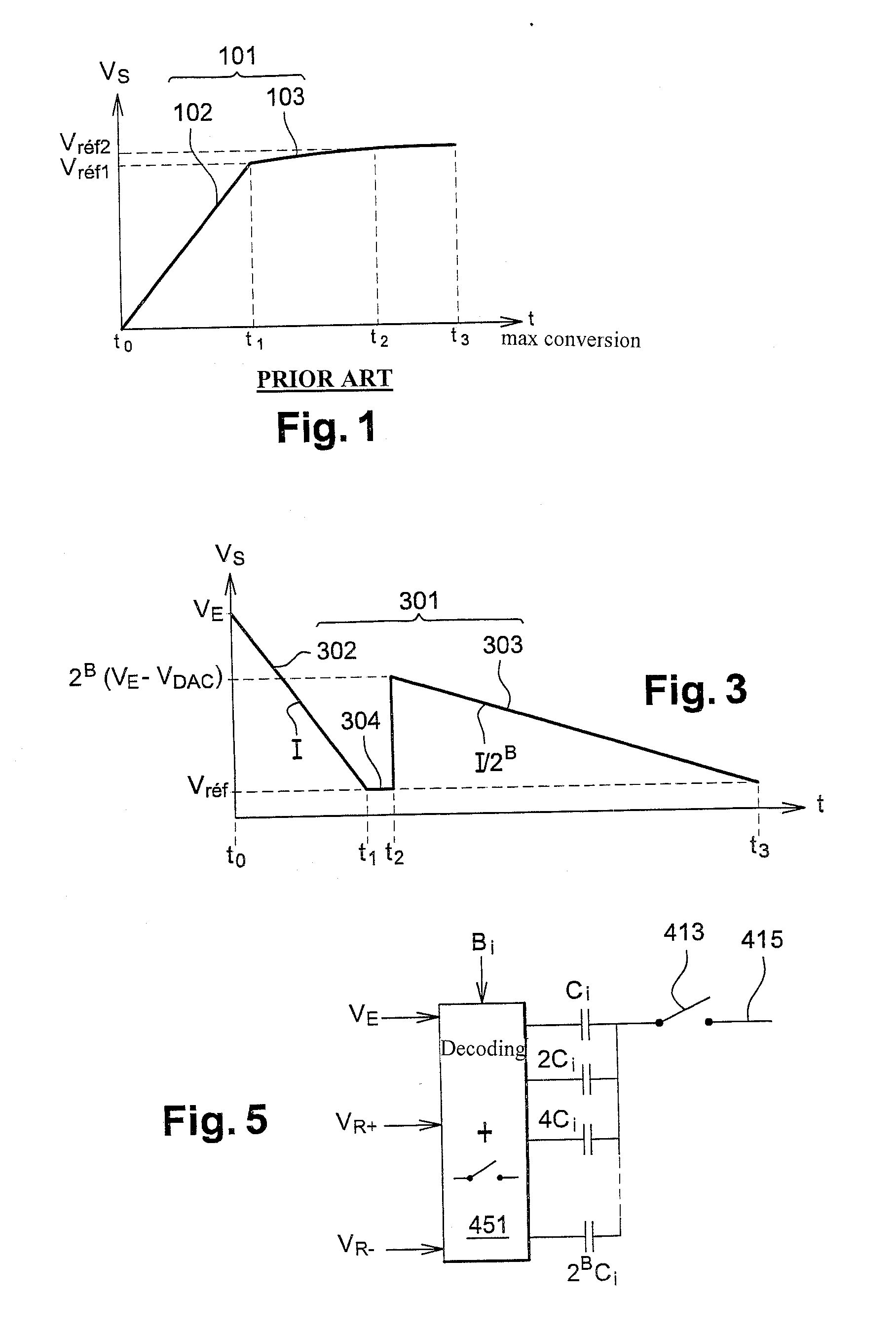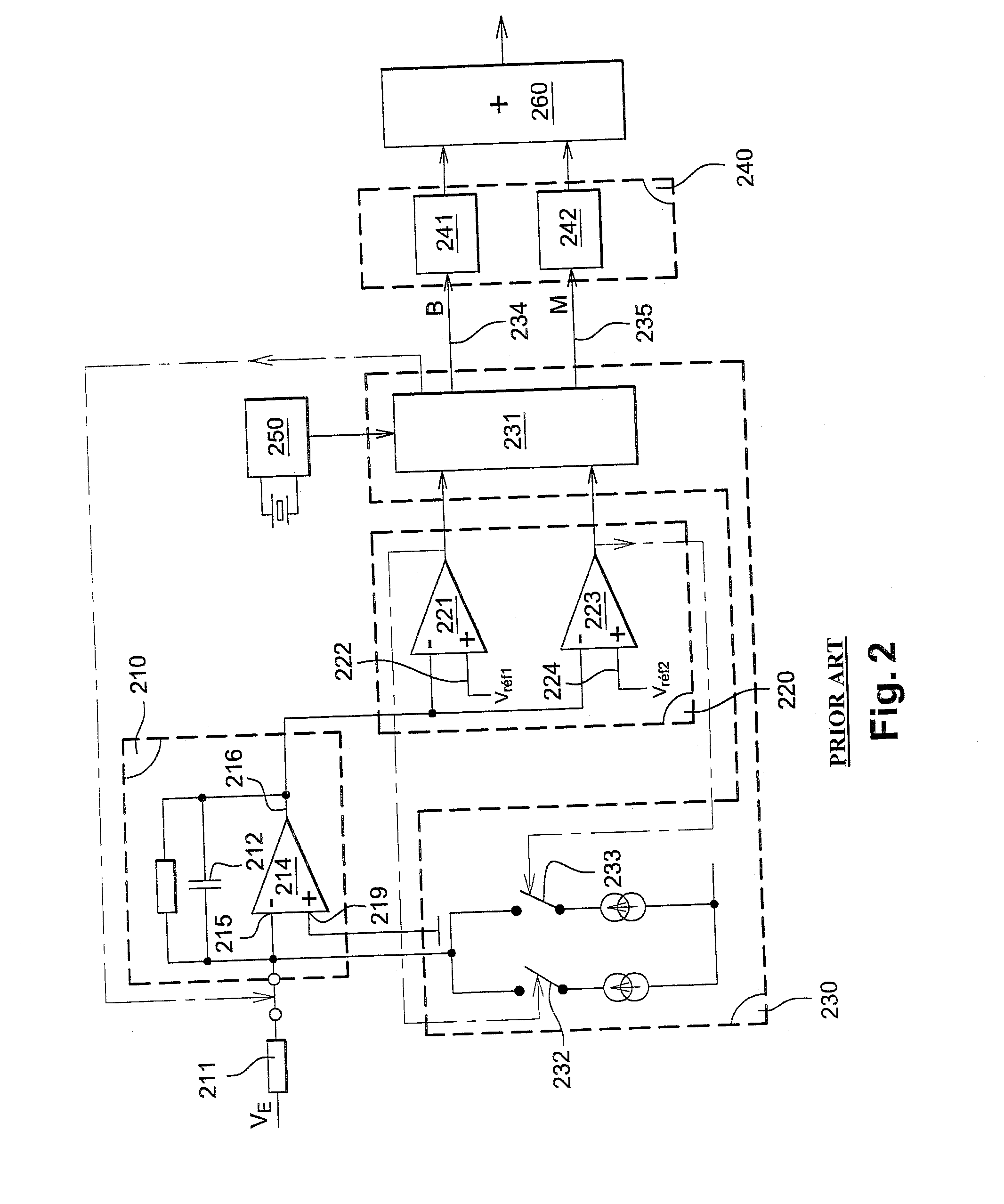Method for digitizing an analog quantity, digitizing device implementing said method, and electromagnetic radiation detector integrating such a device
a technology of digital quantity and digitizing device, which is applied in the field of electronic radiation detectors, can solve the problems of limiting the performance of analog-to-digital converter, increasing the sensitiveness of external disturbances, and each of the conversion devices may be sensitive to the generated electrical disturbance, so as to improve the performance of methods and devices, reduce the number of electronic components, reduce the size of the electronic components, and reduce the effect of power consumption
- Summary
- Abstract
- Description
- Claims
- Application Information
AI Technical Summary
Benefits of technology
Problems solved by technology
Method used
Image
Examples
Embodiment Construction
[0113]FIG. 3 shows a timing chart showing the integration of a voltage over time. The x-axis therefore shows the time and the y-axis the voltage. In FIG. 3, the curve 301 thus shows the integration of an input voltage VE, which begins with a first integration phase with a linear ramp 302 and terminates with a second integration phase with a linear ramp 303.
[0114]The integrated analog quantity here is a voltage. This analog quantity could however consist of another electrical quantity representative of the properties displayed by the elementary sensors of the detector during their interaction with the incident radiation. It could accordingly be the quantity of electric charges, for example.
[0115]The times t1 and t2 are separated by a plateau 304 during which the phase called reinitialization is carried out. This reinitialization phase serves to convert the first numerical value representing the most significant bits to an analog signal which is then separated from the analog quantity...
PUM
 Login to View More
Login to View More Abstract
Description
Claims
Application Information
 Login to View More
Login to View More - R&D
- Intellectual Property
- Life Sciences
- Materials
- Tech Scout
- Unparalleled Data Quality
- Higher Quality Content
- 60% Fewer Hallucinations
Browse by: Latest US Patents, China's latest patents, Technical Efficacy Thesaurus, Application Domain, Technology Topic, Popular Technical Reports.
© 2025 PatSnap. All rights reserved.Legal|Privacy policy|Modern Slavery Act Transparency Statement|Sitemap|About US| Contact US: help@patsnap.com



